Trees Birds Mammals Fish Amphibians Reptiles
Wild Algarve
Bookshop
Psilocybe cyanescens Wakef. - Blueleg Brownie
Phylum: Basidiomycota - Class: Agaricomycetes - Order: Agaricales - Family: Strophariaceae
Distribution - Etymology - Taxonomic History - Psychoactivity - Identification - Reference Sources

Psilocybe cyanescens, commonly known in the UK as the Blueleg Brownie and in the USA as Wavy Caps, is usually found growing on rotting woodchip mulch.
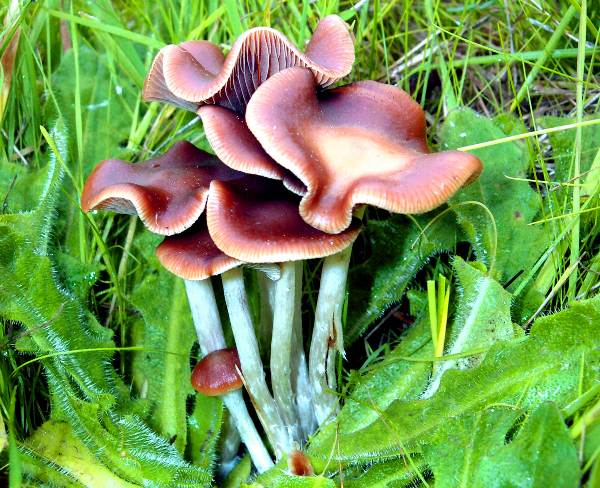
Above: Psilocybe cyanescens in a grassland habitat
Distribution
Increasingly frequent in southern Britain and apparently spreading northwards, Psilocybe cyanescens is probably an introduced species from North America; however, the type specimen was described from woodchip mulch beds at the Royal Botanic Garden, Kew, in London UK. This species is now also recorded in many parts of western and central mainland Europe as well as in Australia.
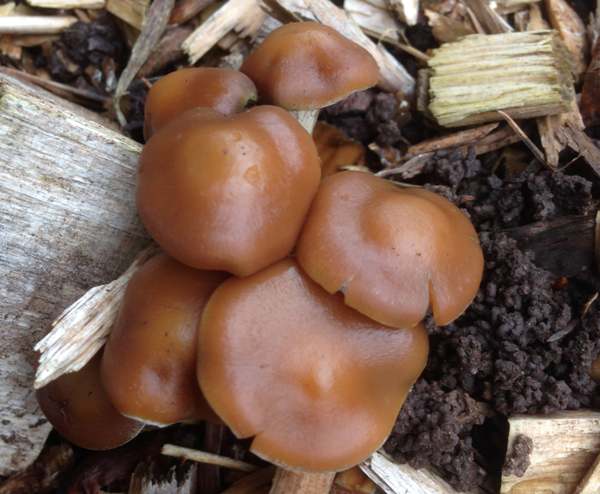
Etymology
Psilocybe, the genus name, means 'smooth head' - a reference to the silkily mooth, scaleless surface of caps of these grassland mushrooms. The specific epitet cyanescens means 'turning blue'.
Psychoactive alkaloid content
This species contains the compounds psilocybin, psilocin, and baeocystin. Because these substances, which occur in Magic Mushrooms and some related fungi, occasionally cause alarming symptoms including vomiting, stomach pains and anxiety attacks, some authorities advise that the Blueleg Brownie should be treated as poisonous.
It is our understanding that it is illegal to possess or to sell psilocybin in the UK. As of July 2005, fresh psilocybin mushrooms are now also controlled. They are treated in Law in the same way as dried magic mushrooms, because whether fresh or dried they have the same Class A drug status as Heroin, LSD and Cocaine.
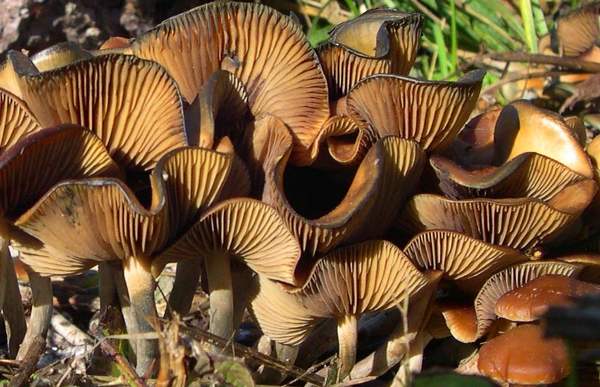
Taxonomic history
This species was first described in 1946 by British mycologist Elsie Maud Wakefield (1886 - 1972), who gave it the scientific name Psilocybe cyanescens; this is the name by which this species is still generally known today. I have no records of synonyms of Psilocybe cyanescens.
Identification guide
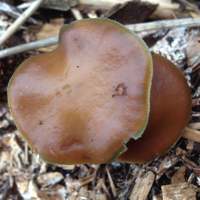 |
Cap
Ranging from 2 to 5cm in diameter, the convex and later flattened caps are slightly sticky and have lined margins that usually become wavy at maturity. The caps bruise bluish, especially at the margin.. |
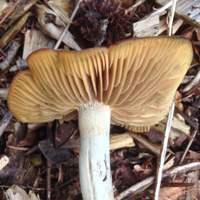 |
Gills
The brown adnate or slightly decurrent gills turn purple-brown as the spores mature; gill edges remain pale.
Cheilocystidia broadly fusiform. |
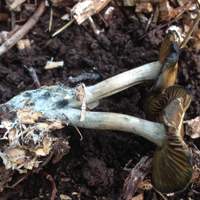 |
Stem
3 to 6mm in diameter and 4.5 to 8cm tall, cylindrical, sometimes with a clavate base with blue rhizomorphs, the white stem of Psilocybe cyanescens is fibrous and bruises pale blue. The partial veil is fibrillose and leaves an evanescent superior ring zone on the stem. |
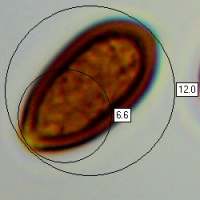 |
Spores
Ellipsoidal, smooth, 9-12.5 x 5-7μm.
Spore print
Very dark purple-brown. |
Odour/taste |
Indistinct or very faint mealy odour. Do not taste Psilocybe cyanescens because it contains toxic hallucinogens that are potentially dangerous. |
Habitat & Ecological role |
This saprobic mushroom is most often found on woodchip mulch (not usually on bark); it is probably an introduced alien species in Britain. |
Season |
These so-called 'Magic Mushrooms' are found in Britain mainly in autumn and winter. |
Similar species |
The deadly poisonous Funeral Bell Galerina marginata is similar but has a distinct stem ring and does not bruise blue.
Panaeolina foenisecii, the Brown Mottlegill or Mower's Mushroom, is a grassland species. |
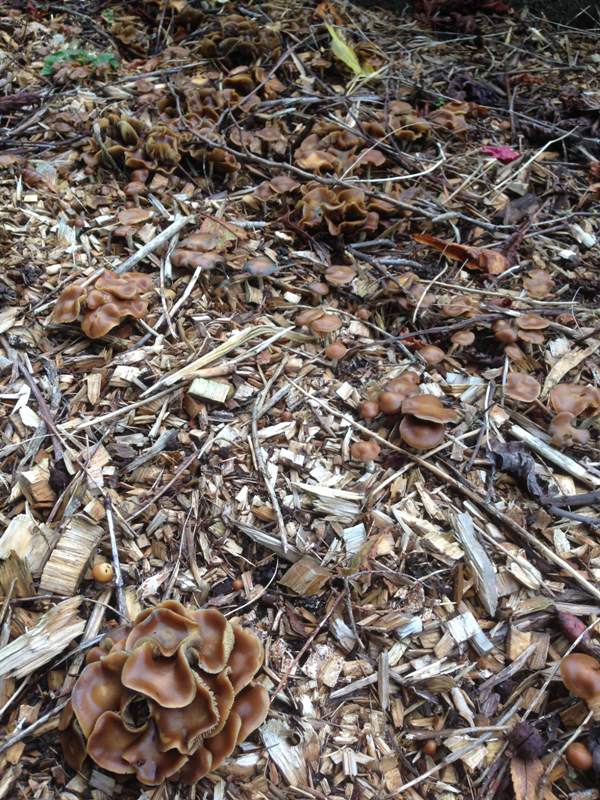
Reference Sources
Fascinated by Fungi, 2nd Edition, Pat O'Reilly 2016, reprinted by Coch-y-bonddu Books in 2022.
Dennis, R.W.G.; Wakefield, E.M. (1 Sept. 1946). "New or interesting British fungi". Trans. British Mycological Society. 29 (3): 141–166.
Dictionary of the Fungi; Paul M. Kirk, Paul F. Cannon, David W. Minter and J. A. Stalpers; CABI, 2008
Taxonomic history and synonym information on these pages is drawn from many sources but in particular from the British Mycological Society's GB Checklist of Fungi.
Acknowledgements
This page includes pictures kindly contributed by John Allen and Simon Harding.
Top of page...
Fascinated by Fungi. Back by popular demand, Pat O'Reilly's best-selling 450-page hardback book is available now. The latest second edition was republished with a sparkling new cover design in September 2022 by Coch-y-Bonddu Books. Full details and copies are available from the publisher's online bookshop...